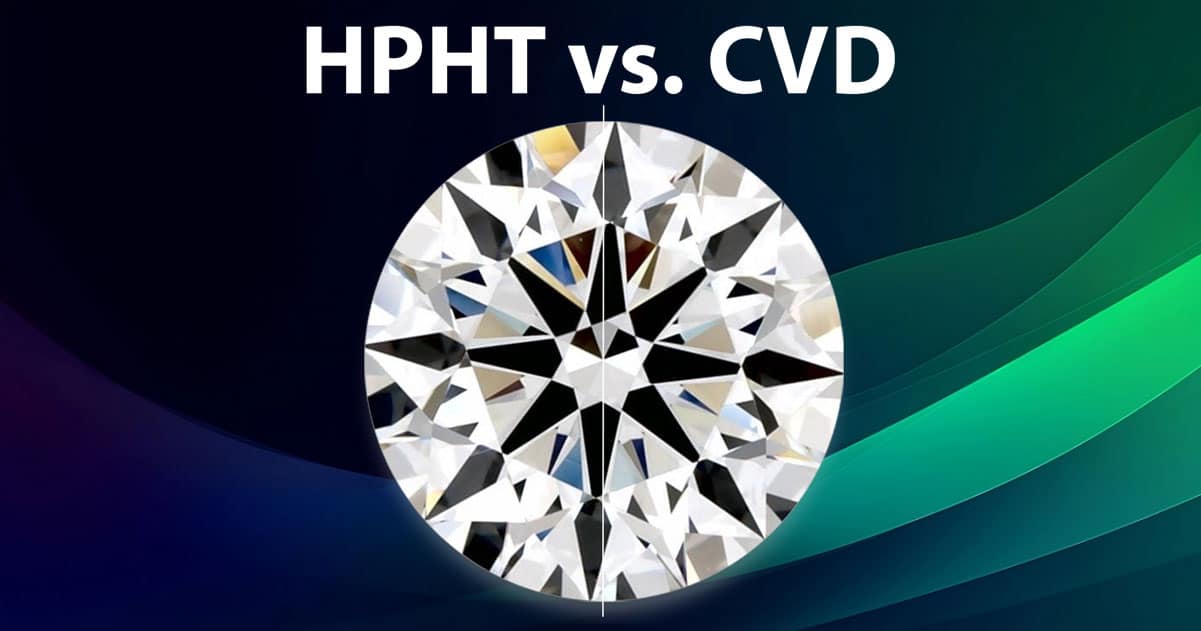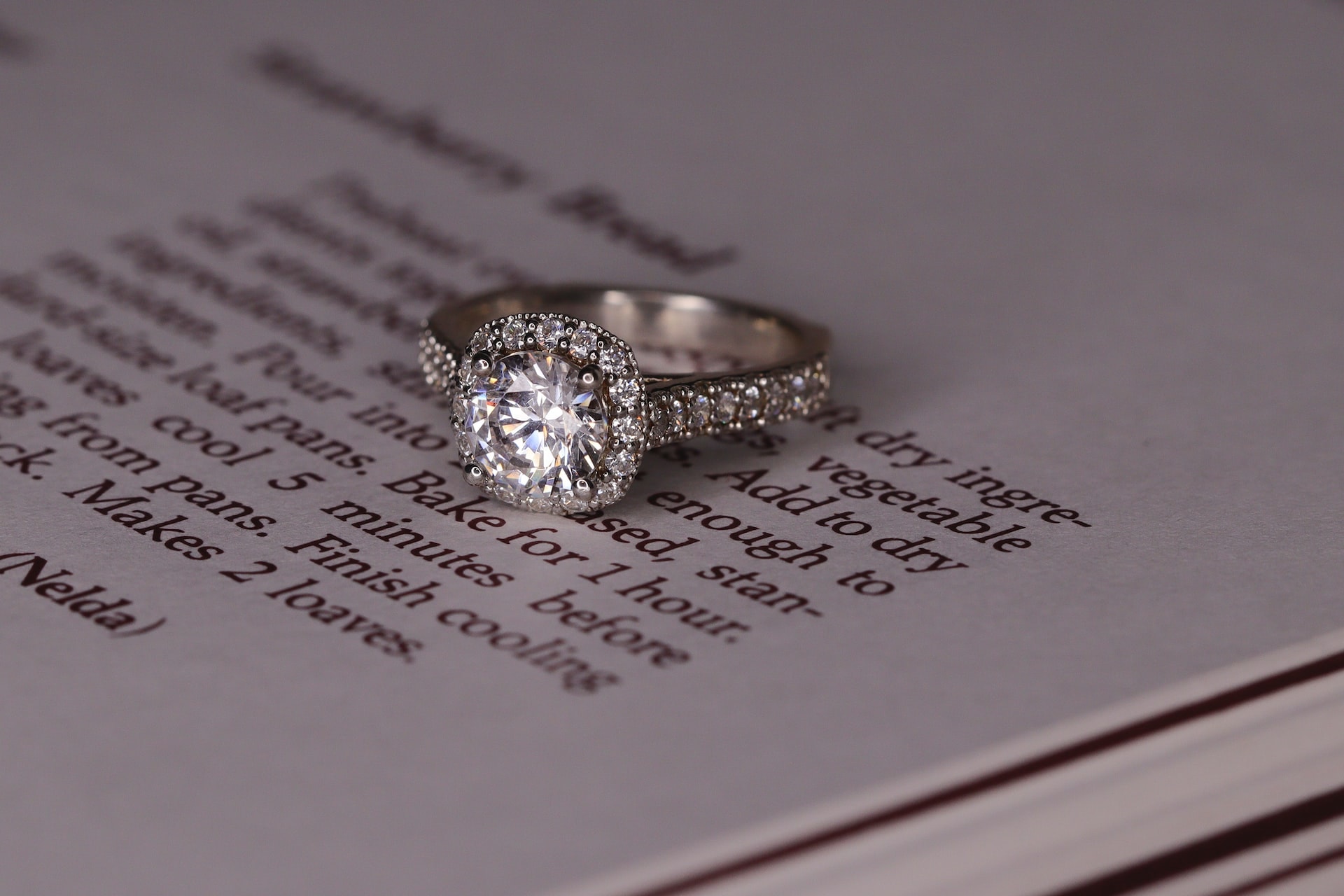Diamonds have long been regarded as one of the most precious and sought-after materials on Earth. Whether for their brilliance, rarity, or their symbolic value, diamonds have a unique appeal. However, with the advancement of technology, the way diamonds are grown has evolved. Today, two primary methods of producing synthetic diamonds dominate the industry: HPHT and CVD. In this article, we will explore the differences between HPHT (High Pressure High Temperature) and CVD (Chemical Vapor Deposition) diamonds, comparing their processes, qualities, and applications.
What is HPHT?
HPHT, which stands for High Pressure High Temperature, is a method that mimics the natural conditions under which diamonds form in the Earth’s mantle. In this process, carbon is subjected to extreme pressure and temperature in a specialized press. This environment encourages the carbon atoms to crystallize and form a diamond. The HPHT process typically requires temperatures between 1,300°C and 1,600°C, combined with pressures of around 5 to 6 GPa, which are similar to the conditions deep inside the Earth.
The HPHT process is not only used for creating diamonds but also for treating diamonds, enhancing their color or clarity. This method is often associated with the production of gemstones, and because it is a well-established technique, many HPHT vs CVD are found in jewelry markets.
What is CVD?
CVD, or Chemical Vapor Deposition, is a newer method for creating synthetic diamonds. Unlike HPHT, CVD diamonds are grown from a gas mixture, which contains carbon-rich gases like methane. In the CVD process, a small piece of diamond, known as a “seed,” is placed in a vacuum chamber, and the gases are heated to break down into carbon atoms. These atoms then deposit onto the seed, slowly building up layers to form a diamond.
CVD diamonds grow at lower temperatures than HPHT diamonds, typically in the range of 700°C to 1,100°C, and at lower pressures. The CVD method allows for precise control over the diamond’s growth, which makes it possible to create diamonds with fewer inclusions and more consistent qualities.
Differences in Production Processes: HPHT vs CVD
The key difference between HPHT and CVD lies in the way the diamonds are grown. HPHT relies on extreme temperature and pressure to create conditions similar to natural diamond formation, whereas CVD uses a chemical process to deposit carbon atoms onto a seed diamond in a vacuum chamber. These differences result in variations in the quality, cost, and applications of the diamonds produced by each method.
In HPHT, the carbon material undergoes extreme conditions to form the diamond crystal structure. This can sometimes result in diamonds with more inclusions and irregularities due to the nature of the pressure and temperature applied. CVD, on the other hand, allows for greater control over the process, leading to diamonds that are often clearer and of higher purity. The process of CVD also enables manufacturers to produce man made diamonds with fewer defects, making them ideal for high-precision applications.
Diamond Quality: HPHT vs CVD
When it comes to diamond quality, there are notable differences between HPHT and CVD diamonds. HPHT diamonds, due to the intense heat and pressure, often contain more inclusions, such as nitrogen or other elements trapped during the crystal formation. These inclusions may affect the appearance and the value of the diamond, but some consumers find these diamonds appealing for their natural look.
CVD diamonds, on the other hand, typically have fewer inclusions, as the process offers better control over the crystal growth. The purity of CVD diamonds is often higher than that of HPHT diamonds, and they can be made with a near-flawless finish. As a result, CVD diamonds are often preferred for use in high-end jewelry, where clarity and quality are paramount.
Cost Comparison: HPHT vs CVD Diamonds
The cost of a diamond is influenced by several factors, including its size, quality, and method of production. When comparing HPHT vs CVD diamonds, CVD diamonds tend to be more expensive due to the higher level of precision and control involved in their creation. The equipment used in the CVD process is also more expensive, as it requires sophisticated technology to maintain the vacuum and gas mixtures needed for diamond growth.
On the other hand, HPHT diamonds can often be produced at a lower cost because the method relies on more traditional machinery. However, the presence of inclusions and the slightly lower level of control over the diamond’s properties may result in a reduced price for HPHT diamonds. The cost difference between HPHT and CVD diamonds also depends on the size and quality of the final product, with larger, higher-quality diamonds generally costing more, regardless of the method used to produce them.
Applications of HPHT and CVD Diamonds
Both HPHT and CVD diamonds have a wide range of applications, from jewelry to industrial uses. HPHT diamonds are commonly used for gemstone production, as the method can produce diamonds in a variety of colors and sizes. HPHT diamonds are also used in industrial applications, such as cutting tools, due to their durability and hardness.
CVD diamonds are often used in high-precision industries, including electronics and optics. Their superior purity and ability to be engineered for specific properties make them ideal for these applications. CVD diamonds are also gaining popularity in the jewelry market, where consumers are looking for diamonds with fewer inclusions and better clarity.
Conclusion: HPHT vs CVD Diamonds
In conclusion, HPHT vs CVD diamonds each offer unique advantages and characteristics that cater to different needs and preferences. HPHT diamonds are well-suited for traditional gemstone applications and offer a natural, distinctive look. CVD diamonds, with their higher purity and control over the growth process, are often used for high-end jewelry and industrial applications. Both methods have their place in the diamond industry, and understanding the differences between them can help consumers make informed decisions when choosing a diamond. Whether you are looking for a diamond for its beauty or for its practical uses, understanding the nuances of HPHT vs CVD will help you choose the perfect diamond for your needs.



